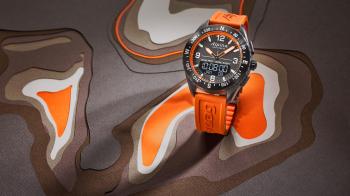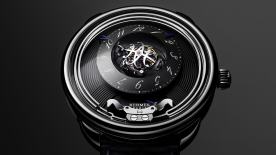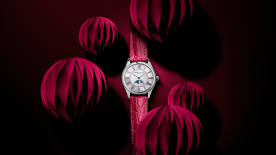In recent years, sport and health have taken on a more important role in our lives. Running, swimming, climbing, or even just walking, are now more than just simple activities. They have become a lifestyle.
Of course, the watch industry has always been close to sportsmen and sportswomen.
It was a (female) swimmer who tested the water resistance of the first Rolex Oyster. Later on, we needed a means to time the exploits of athletes in competitions but also to build watches that could cope with more active lifestyles. They needed to be more solid, more water resistant and more legible. Then came the time to offer a more proactive companion for sporting activity.
This is what chronographs allowed us to do by giving us all a wearable means of measuring elapsed times that could be activated by the wearer themselves.
The sports watch was really born in the 1960s, first as a professional instrument and later as a buddy for swimming and outdoor activities. But we had to wait quite a while before it became a genuine sports accessory.
In fact, it was not until quartz arrived that watches could become more complicated without resorting to “grande complications”. They learned to count, to measure, to calculate and even to record voices. Slowly, these digital watches from the 1980s won over a new type of customer – one who was less horological and more practical. The watch became a tool that helped us in our daily lives, without being restricted just to telling the time.
For historical watchmakers, these watches were no longer real watches. They used technology that had come from the world of information technology and were born of development and production programmes that were far removed from those found in the quiet valleys of the Swiss Jura. For many, they also came from a continent that was even more mysterious: Asia.
But these digital watches also introduced something new: interaction.
From now on, anyone who owned one of these watches could “play” with it, interact, speak, ask it questions, scroll through different menus. It was complicated and sometimes even abstruse, but this new relationship with the object would set a new standard, and new desires.
At the same time, sporting activities became even more widespread and turned into a business. You had to dress appropriately, wear the right footwear and travel. You needed to know yourself better, train better. And to do that you needed information. The sports watch had to keep up with this trend and become more intelligent. But also more robust.
Brands also needed to abandon gold and steel and turn to plastic. For many it was heresy, but Casio took up the challenge and launched the G-Shock in 1983. Was it a sports watch? No, it was above all intended for people who worked in extreme environments. But its robustness made it THE watch for the armed forces and sportsmen. Plastic, quartz and the interface: the modern sports watch had just been born.
And since it was being targeted at an ever broader audience, brands also had to think about the price, and therefore about its production and distribution. It was easy to use but with complex functions, it was solid and cheap, that’s what defined these new entrants.
The sports watch actually forced the entire watch industry to rethink. But taking a closer look, it actually did much more: it created its own industry, its own market and its own values. Because sportsmen and sportswomen, whether they are amateur or professional – have different expectations. Function was important, whereas for “classical” watches it had taken a back seat in favour of the design and the image projected. Putting function back at the centre of the debate caused a problem: watches needed to be innovative, attractive and constantly offer more and better.
Faced with these demands, mechanical watches lost ground to electronic and digital watches. Not that they were competing, it was just a case of two markets developing in parallel. We see the result today with the unstoppable growth of smart watches, hybrid objects that are difficult for our classical watchmakers to understand. They are quite simply the best-selling watches in the world.
Of course, not everything is linked to sport. They offer much more than that. But what is interesting is that sport may be the way that watch brands can keep in touch with this new world. Smart watches have already won the communications battle. They are now moving into the health market. They can claim exclusivity in this field and become the “only” watch on the wrist.
But it might be a bit different for sport. I like vintage watches, I like mechanical watches, I like good watchmaking, but for sport I’m looking for something different. I don’t want to have to choose; I want to enjoy both. When I go out running, the sports watch is an indispensable companion. After the effort, it deserves a rest and I can put another watch on.
There is the brain and the heart. We choose the smart watch with our brain and the classical watch with our heart. This difference is fundamental: utility versus pleasure, efficiency versus emotion.
Once the watchmaker has understood that what separates these two worlds is not the watch itself but its raison d’être, he can get back to work. And that is precisely what is so appealing about the brands who are taking up the challenge of efficiency over emotion. It’s a tough one, fraught with difficulty, but maybe it’s worth it...

Let’s see with the Alpina AlpinerX.
Why Alpina?
The brand was born 130 years ago.
It was not a true watch factory at the time, rather an assembler that created its watches using components supplied by other companies. Its name – and its logo – evoke the Swiss Alps, of course, and show in an interesting way the old links between sport and open-air activities.
It is thanks to its robust, water-resistant and anti-magnetic watches that Alpina made a name for itself. It remained loyal to mechanical movements even at the height of the quartz crisis. Unfortunately, this was a fateful decision.
Since it was relaunched in 2003, Alpina has kept its feet firmly on the ground, offering nice, affordable watches with a classic design.
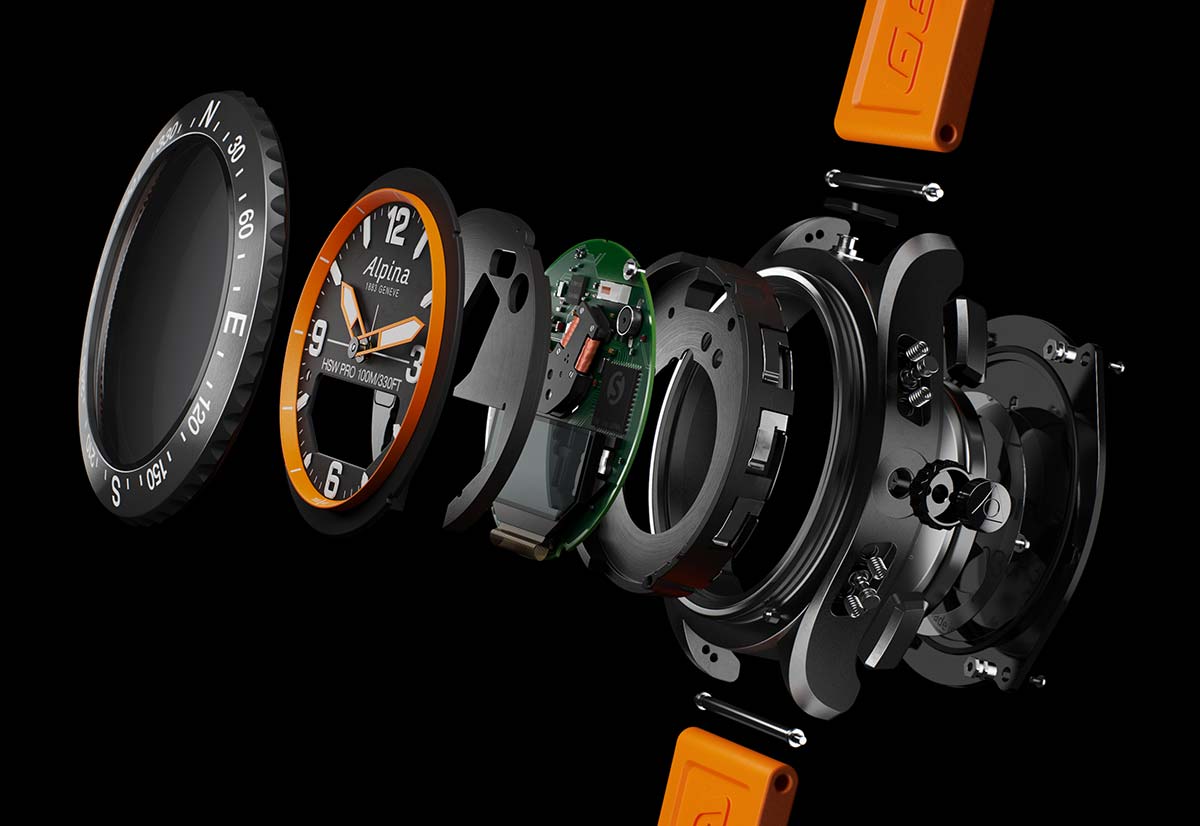
Recently, the brand with the red triangle joined the smart watch adventure with an offering of several models, from smart diver’s watches (the horological smart watch) to sportier models that I now come to: the AlpinerX range.
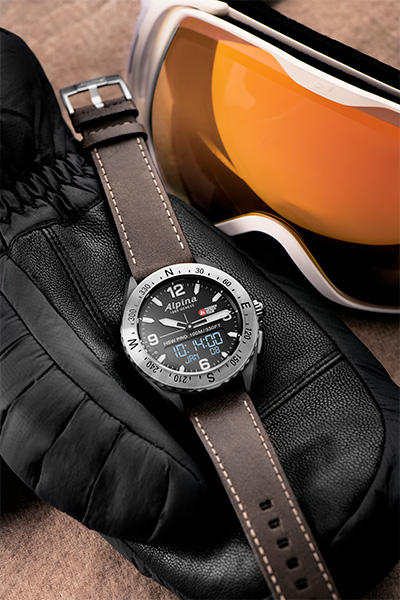
Alpina continues to cultivate its strong links with mountains by sponsoring several freeride events but also dog-sled races. In 2018 Alpina became a partner of the National Park Foundation, an American association that supports efforts to preserve the country’s famous national parks.
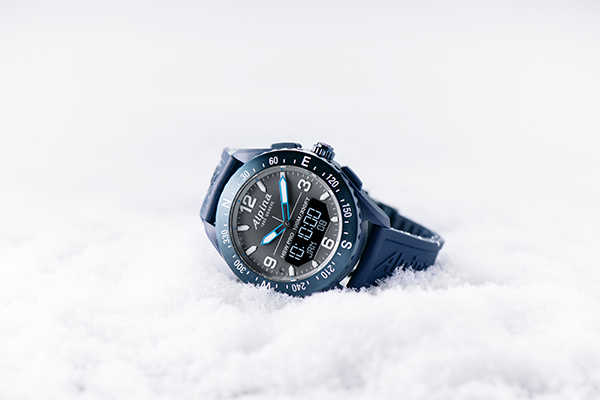
With its history and its close links to the mountains, Alpina was naturally tempted by a major horological challenge. By entering the world of smart watches, the brand took a risk. But it was an enticing one.
Alpina AlpinerX: oh how the mountain is beautiful...
So here we are with a watch that I would say is bizarre, but in a good way. With this AlpinerX, Alpina is sharing its vision of what a smart watch should be. So, let’s get straight to the heart of the matter: is it a direct competitor for the Apple Watch? No. And it’s not meant to be. Remember, to win over new customers, watch brands need to take step back and think differently. This is what the Alpina AlpinerX forces us to do.

First of all, let’s be clear: it is a watch. By that I mean that it has the aesthetic characteristics of a “classic” watch. What is funny is that it almost has a semi-vintage feel to it. We see the ana-digi display that reminds me of my first-ever watch, a Certina from the 1980s. It also reminds me of the Breitling Aerospace and the Omega X-33.
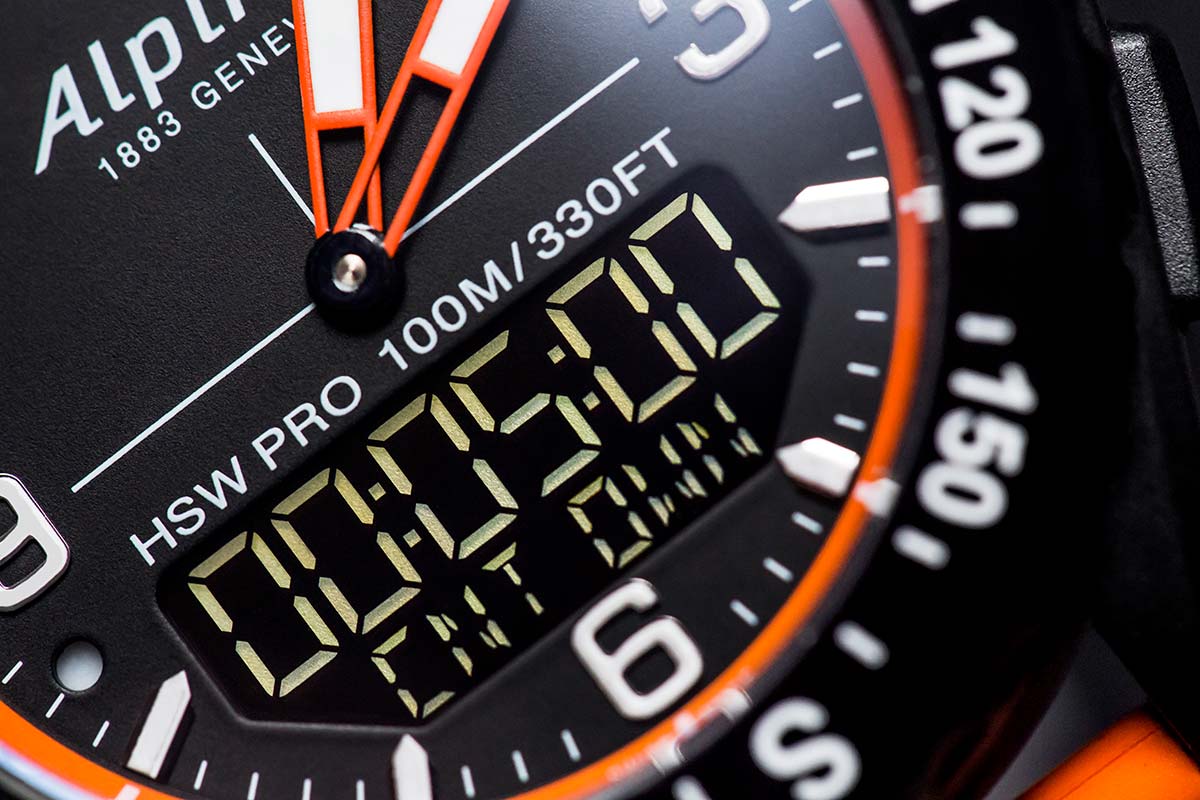
So there are hands and a – small – screen, a crown, pushers and a graduated bezel. We are in familiar territory. The dial is nice, well designed, with imposing numerals at 12, 3, 6 and 9. The display is in the lower half of the dial, the hands are broad and filled with luminescent material.
The case is one of the first surprising things about this watch. It is in glass fibre, but not being an expert is materials, I could also say reinforced plastic. Don’t see anything negative in this, on the contrary. This choice fits perfectly with the watch’s purpose and gives it a warm feel. The use of glass fibre also means it can be offered in classic black, but also an appealing navy blue.

The rubber strap, which is available in different colours, and the folding clasp, perfectly round off this funky adventurer.
So much for the “watch” side of things. Now let’s take a look at the “smart” part. The AlpinerX is clearly an outdoor watch. It has various sensors, the most interesting of which – for the California resident in me – is the UV index. This is rare and it’s a great idea!
But besides warning you of impending sunburn, the AlpinerX also has a compass, a barometer, GPS (via phone link), activity tracker and thermometer. The classic chronograph and time zone functions are also available. When connected to your telephone, it can also notify you of calls and messages.

What makes the Alpina AlpinerX even more attractive is its battery life, which is more than two years and means that you are unlikely to discover that your watch is “dead” just before heading out on a trek or a race.
Like any smart watch worth its salt, the AlpinerX connects to your telephone, on which you can install the AlpinerX application developed by Alpina. This allows you to configure your watch, choose the functions that you want to see on the display and check your daily activity, including your sleep. It’s a great package, and Alpina seems to have hit the nail on the head with a watch that appeals to fans of the great outdoors but also those who like to travel with a watch that is nice to look at, useful, solid and discreet.

I think it’s also important to mention that the price of this watch is extremely reasonable and positions the AlpinerX well against its competitors. It is also interesting to note that, although it is now available in stores, it was first launched on Kickstarter, which was another good way of setting it apart.
What does the devil’s advocate think?
Nature, the outdoors, sport, exercise… That will keep in you in good health and that’s not the kind of thing that the devil’s advocate likes. But joking aside, what can we suggest to Alpina about the AlpinerX?
I would have preferred a bigger display and a little less text on the dial. The Alpina logo could also be a bit smaller.
In terms of functionality, the watch is complete. It will no doubt evolve in the future and offer new functions. My main regret is the limitation of information that can be displayed on the (too) small display. A version with two displays could solve this.
We could, of course, ask for on-board GPS and a heart-rate monitor, but that would affect the battery life.
Finally, I think that the biggest problem with the Alpina AlpinerX is positioning it clearly between the watch and the smart watch. It has a lot going for it and it and it should be given the chance to sell itself.
Get out, move! How to wear the Alpina AlpinerX in Sport mode?
For once, you can forget about a suit or a blazer, shirts or fashionable shoes. The AlpinerX is a sports watch, so let’s head out running or for a cross fit session!
Let’s start with the right footwear. For running, I prefer the legendary Nike Vaporfly 4%, one of the most highly-developed running shoes, for which rumour has it that the shoe can lower your heart rate and improve its effectiveness by 4%....
If this is too extreme, the new Adidas UltraBoost is a good alternative. Or the Asics MetaRide with its unusual curved sole.
Now you need to dress comfortably. A good pair of shorts is vital. And I can only think of one: Train-Lite™ Liner 7" Conditioning Short by ASRV. What is so special about them? They include a compression under-short with a pocket that keeps your smartphone held against your leg. It’s very clever and very useful. What’s more, these shorts are available in some unusual colours, like white or camouflage.
For the T-shirt you will also find simple, practical and comfortable ones from ASRV, with short or long sleeves. The alternative: the highly original collections by Nike.
If you’re going far, you need to feed the engine, and therefore drink. A rucksack with a hydration system is always useful. It should fit your body and be discreet. After trying many different ones, I can thoroughly recommend the Osprey Duro 6. It has accompanied me on many runs and some half marathons without ever letting me down.
In the event of bad weather, you will need a lightweight waterproof jacket. One of the most comfortable is the Asics MetaRun.
If things get tough, there is nothing better than some music, so a good pair of headphones is vital. The Jabra Elite Sport are the best on the market. They are compact, stay in place and offer astounding sound quality.
Now you just need to strap the AlpinerX to your wrist and start running, jumping, climbing or just walking.
